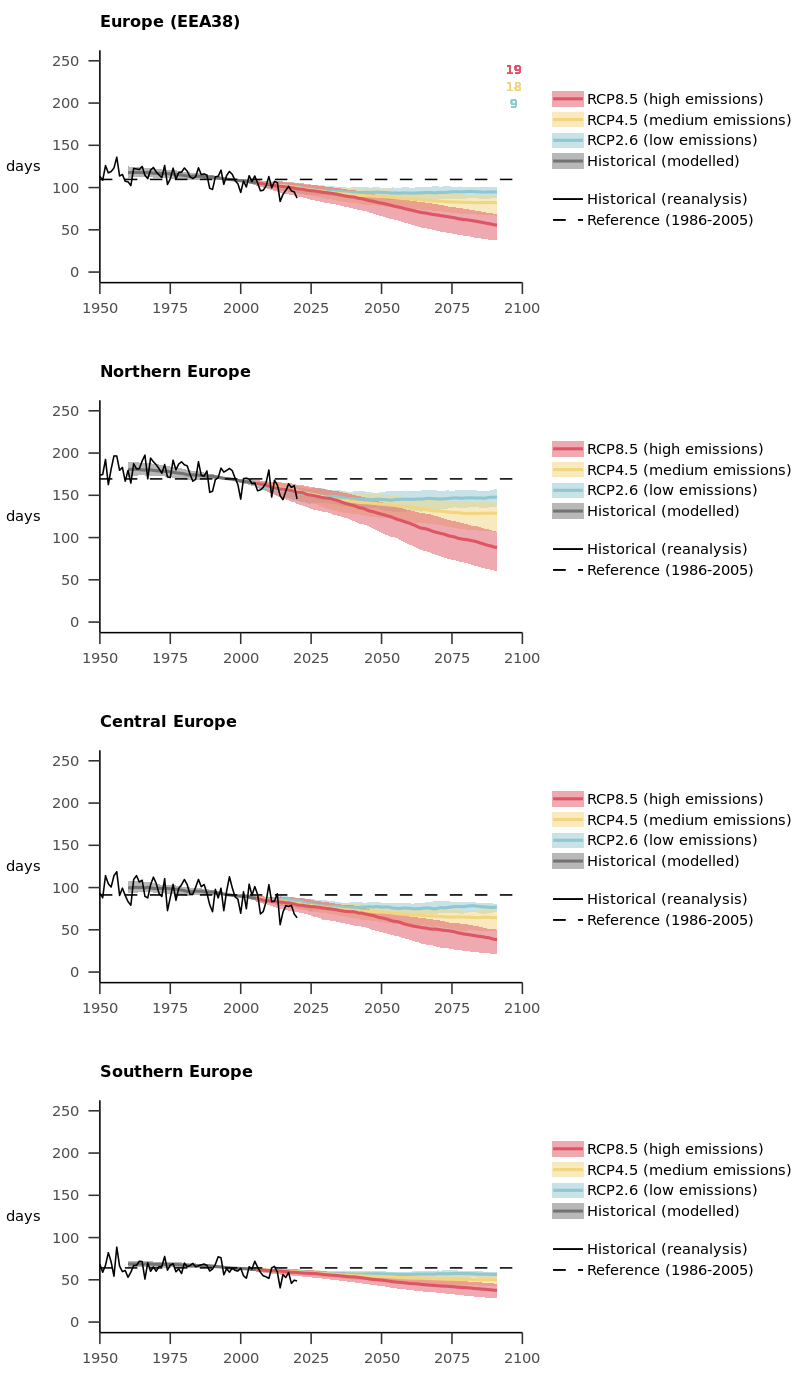Key messages
- The number of frost days in Europe has decreased, especially in northern Europe. This trend is set to continue in the future.
- Despite an overall decrease in frost days, the risk of frost damage faced by fruit and vegetable producers could increase because of an earlier start to the growing season.
Definition
The frost days index is defined as the number of days in a year with a daily minimum temperature below 0 °C. Variations of this index can limit the counting of frost day occurrences to particular seasons (e.g. the growing season or the spring months). A closely related index, ‘ice days’, uses a daily maximum instead of minimum temperature.
More information - Index factsheet (ETC/CCA Technical Paper): Frost days
Relevance
This index is widely applicable in several sectors, including agriculture, infrastructure and transport. The index proposed here can easily be computed and interpreted because of its simple definition and the availability of the input data required.
Assessments of the risk of late spring frosts for agricultural crops would require a modification of this index that considers regional climate conditions and growing seasons of the main crops. In Europe, the fruit and vegetable sectors are particularly affected by frost. Despite an overall decrease in frost days, an earlier start to the growing season could increase the risk of frost damage during the growing season.
Past and projected changes
The number of frost days in Europe has decreased since the 1980s, but with considerable year-to-year variability. The fastest absolute decline has been observed in northern Europe. This trend is projected to continue throughout the 21st century, and the number of frost days is expected to decline by about half during the 21st century under the high-emissions scenario (representative concentration pathway (RCP)8.5).
Note that the bias adjustment of temperature projections around freezing point is challenging because of the abrupt albedo difference between snow- or ice-covered surfaces and bare surfaces.
Further information (European Climate Data Explorer): Frost Days, 2011-2099

Notes: The black lines show the annual values for 1950-2020 from reanalysis data, and the dashed horizontal lines show the means for 1986-2005. Solid grey, blue, yellow and red lines represent the ensemble medians of model simulations for the historical period and under low-, medium- and high-emissions scenarios (RCP2.6, RCP4.5 and RCP8.5, respectively) (smoothed by a 20-year moving average). Shaded areas show the 15th and 85th percentile ranges of the model ensembles. The size of the model ensemble used for each scenario is shown by the coloured numbers in the top-right corner.
Source: ERA5 and bias-adjusted CMIP5 data.
Notes: The top panel shows the 1986-2005 mean values based on the reanalysis. The central row and bottom row show the projected values and the projected changes, respectively, of the 15th and 85th percentiles for the near and far future. The size of the model ensemble used for each scenario is reported in the time-series figure above.
Source: ERA5 and bias-adjusted CMIP5 data.
Document Actions
Share with others